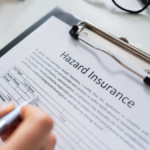When unexpected damage occurs to your home, whether it’s due to a fire, windstorm, or vandalism, the consequences can extend beyond mere repairs.
Your living situation may be disrupted, leaving you needing a place to stay while your home is rebuilt or repaired.e That’s where the loss of use insurance, also known as additional living expenses (ALE) coverage, steps in to provide crucial financial support.
Loss of use coverage is essential to your homeowners, condo, or renters insurance policy. It is designed to assist you in covering the necessary temporary living expenses that arise when you are forced to move out of your home or rental property during repairs.
Let’s take a closer look at what loss of use coverage entails and how it can help you during these challenging times.
Understanding Your Additional Living Expenses
To accurately assess — and eventually be reimbursed for — any incremental living expenses you might incur, it’s essential to understand what constitutes your “normal” day-to-day living expenses.
These typically include:
- Mortgage or rent payments.
- Utility bills, like water, electricity, internet & cable, trash, and recycling removal.
- Transportation costs, including mileage driven to work or public transportation fees.
- Food expenses, encompassing average meal costs per person and weekly grocery bills.
Loss of use coverage comes into play by covering any additional everyday living expenses that surpass your typical spending. For instance, if you end up in a temporary living situation that’s further from work than you usually commute, or if you have to double your typical grocery budget increases because you’re ordering more takeout since you can’t cook at home, your policy can cover the difference.
Providing Financial Stability During Home Displacement
Loss of use coverage aims to provide you and your family with the means to maintain your current lifestyle and compensate for the additional costs of living elsewhere when your home becomes uninhabitable.
Here’s how it works:
- Temporary Housing: If it’s determined that your home is uninhabitable due to a covered claim, loss of use insurance can cover the costs of renting a place to stay, ensuring that you have a roof over your head during the repairs. It can even cover the Credit check fee the management company charges when renting a temporary house.
- Food and Meals: Expenses related to groceries, takeout, and dining out can be covered, helping you sustain your regular diet despite the displacement.
- Essential Services: Loss of use coverage can reimburse you for necessary services like laundry, allowing you to maintain cleanliness and hygiene while away from home.
- Transportation: Whether it’s commuting to work, school activities, or religious gatherings, your increased travel distance from the temporary housing can be compensated for through mileage reimbursements. This can even cover mileage between your temporary rental and any locations visited for rebuild-related business.
- Miscellaneous Expenses: Loss of use coverage extends to various miscellaneous expenses during temporary housing, including furniture purchases, utility setup fees, claim-related photocopies and mailing expenses, pet boarding costs, and additional insurance fees for personal property in the temporary space. It may also cover the costs of moving back to the repaired or rebuilt home, reconnection fees for services, and even carpet cleaning expenses as per the temporary lease agreement.
Limitations and Exclusions
While loss of use coverage provides vital support during home displacement, it’s essential to understand its limitations and exclusions:
- Mortgage Payments: Loss of use coverage does not cover your mortgage payments. It focuses on your additional living expenses rather than your existing financial obligations.
- Rental Income: If you rely on rental income from your property, loss of use insurance typically does not cover the loss of rental income beyond the period required for repairs or rebuilding.
- Non-Covered Perils: Loss of use coverage only applies when your home becomes uninhabitable due to a peril covered explicitly by your home insurance policy. Events like earthquakes or floods may not be included unless explicitly stated.
Activating Your Loss of Use Coverage
To trigger your loss of use coverage, your home must be declared uninhabitable due to a covered event like fire, windstorm, or vandalism. However, if your home is undamaged but inaccessible because of a government order or civil authority, loss of use coverage may not apply.
There are some exceptions if a civil authority restricts the use of your home due to damage to neighboring properties. In such cases, you might be eligible for two weeks of additional living expenses coverage or reimbursement for fair rental value.
Remember, loss of use coverage doesn’t apply if your home is uninhabitable due to flood damage. If you’re worried about potential flooding, it’s important to get separate flood insurance to cover those expenses.
Duration and Coverage Limits
Loss of use coverage typically extends for a specific period, often 12 months, or until your dwelling becomes inhabitable again—whichever comes first. Reviewing your insurance policy to understand the exact duration and any limitations on coverage is crucial.
The expenses covered by loss of use insurance are subject to the limits outlined in your policy. Make sure to familiarize yourself with these limits to ensure you have a clear understanding of the financial assistance available to you during home repairs.
We can help
Speaking with the Guided Solutions team specializing in property insurance can help you determine how much coverage you need for your particular situation.
We’ll help you determine the correct type and the appropriate coverage limits based on your property, location, family size, commute, and usage.









